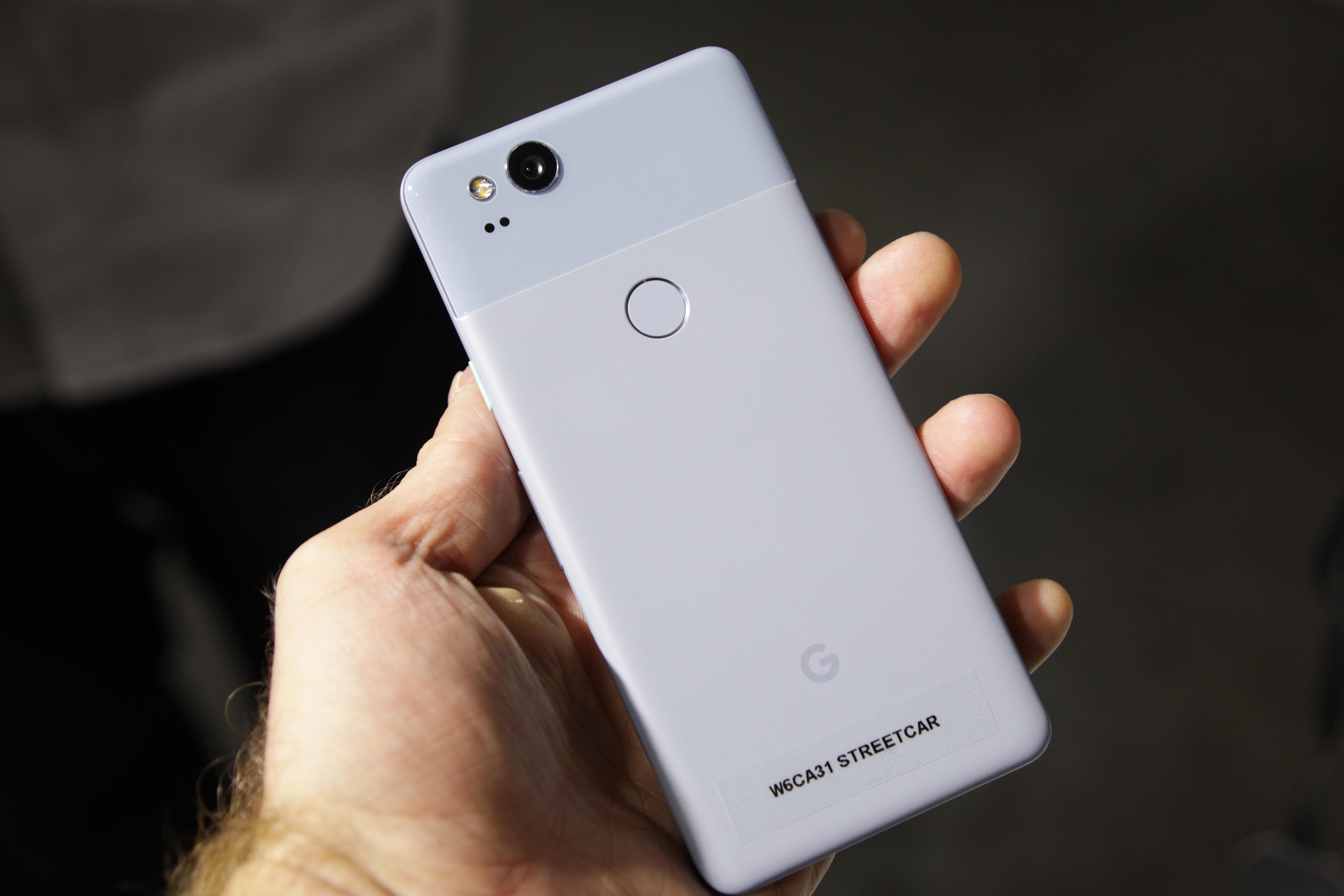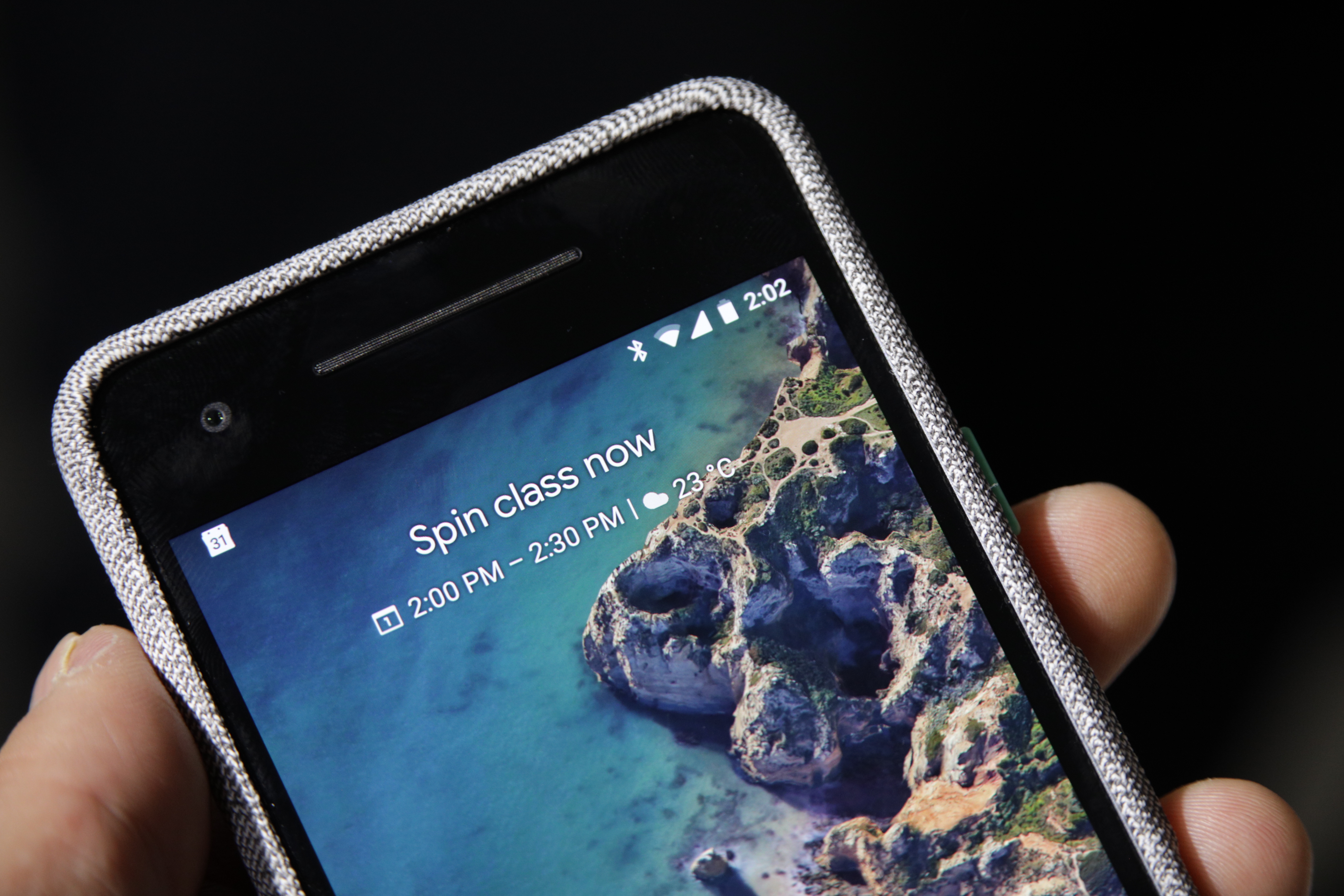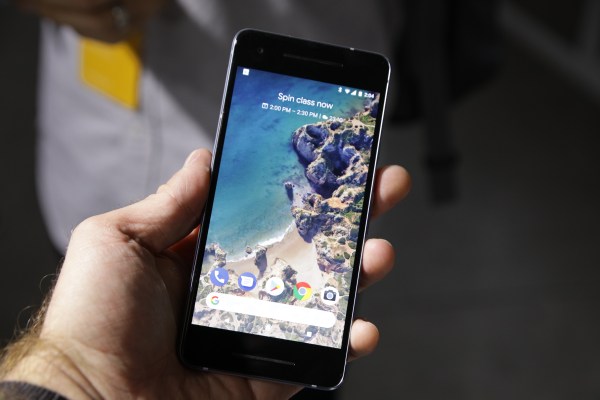Google sold the idea of paradigm shifts hard on-stage at today’s big event in San Francisco — that, after all, is kind of the company’s M.O. This time out, CEO Sundar Pichai hit the stage to discuss a coming transition in hardware, away from the specs race, to something less immediately apparently, but no less important: machine learning and AI.
The Pixel 2 is a pretty solid distillation of many of these idea. After all, the product doesn’t exactly represent leaps and bounds when it comes to upgraded innards. The processor has been bumped up to a Snapdragon 835 — the same one that’s powered practically every flagship over the past year (rumor has it that the new Qualcomm chip just didn’t make it out in time).
Storage has been doubled, but RAM’s the same. The same goes for the screen and camera — from a hardware perspective, we’re dealing with largely the same components as the last generation. It’s probably going to be a hard sell for the company — consumers (and tech bloggers alike) have been trained to salivate at the mere mention of specs, Pavlov-style. And from that point of view the phone doesn’t bring much more to the table. It’s a big like a politician arguing for nuance — you’re doomed to get drowned out by the person who can yell the loudest.

There are, of course, a number of key changes designed to appease upgraders. The new design is nice, with that shiny black and white piano piano finish. There’s a bright orange swath of paint on the power button as well, but that’s really got an Apple Watch red dial vibe and doesn’t really bring much to the table. The new squeezeable sides carry some awfully familiar shades of the HTC U11, launching Assistant when you tighten your grip. It was a gimmick then as it is now, but at least here the company didn’t build the entire phone around it.
You have the scratch the surface a bit more for the real change. Portrait mode, for one, is really impressive — particularly when you consider the fact that the company has managed to do it with a single camera. I tried it out — it works really well, adding that fake bokeh effect around the subject to help the person in the picture pop. Ditto for the addition of hybrid optical and electronic image stabilization. Both are clear cases of the company improving upon existing hardware without participating in the phone spec cold war.
Some other additions to the Pixel software deserve recognition — Music Recognition is a really neat addition that’s sure to hit Shazam where it hurts. I wasn’t able to try that one out, sadly — it was just too damn loud in here. Same goes for those front facing speakers. They couldn’t really compete with the loud atmospheric din of a scrum of tech reporters.

Though Google gets some credit for placement there, making sure the user’s hands don’t block the sound when holding the device. Oh, and a new Assistant feature that lets the identify a song based on a small muttering of lyrics represents a company that’s building out a try capable AI, one small step at a time.
Taken together, the Pixel 2 and Google Assistant represent an interesting shift for the company. Google felt like it didn’t have much to add to an already great smartphone from a hardware perspective, but this moment in time represents a lot of ML, AI and contextual data meshing together in such a way that could help the smartphone take its next evolutionary step into an even more connected device.
And if that doesn’t work, it can toss on a higher resolution screen next year, right?
